 3
3  1
1  3
3  1
1  33
33 4.6cm
Step-by-step explanation:
A diagram showing the analysis from the question has been attached to this response. Kindly download it and view.
From the diagram,
=> We have three angles given
(i) the right angle, 90°
(ii) the angle opposite to side x, 50°
(iii) the angle opposite to side y, 40°
=> We also have one side given,
(i) the hypotenuse, of length 6cm
We can therefore apply the sine rule as follows;
 ---------------(i)
---------------(i)
Now to get the value of x, we'll equation the first and second terms of equation (i) as follows;
 [cross multiply]
[cross multiply]


 cm = 4.6cm [to the nearest tenth]
cm = 4.6cm [to the nearest tenth]
Therefore, the value of x is 4.6cm to the nearest tenth
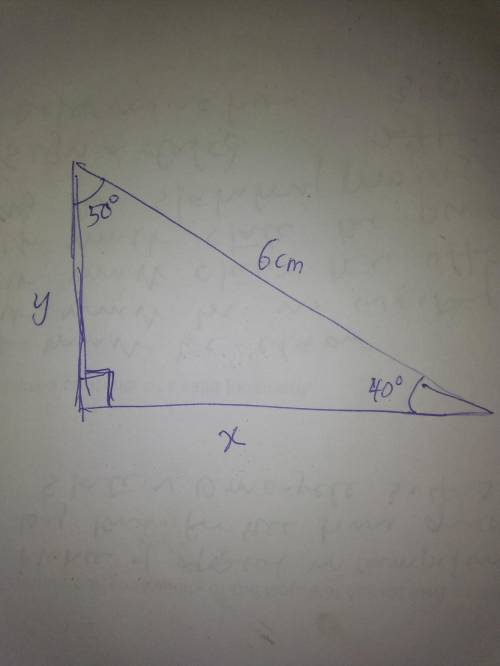
 33
33 4.6cm
Step-by-step explanation:
A diagram showing the analysis from the question has been attached to this response. Kindly download it and view.
From the diagram,
=> We have three angles given
(i) the right angle, 90°
(ii) the angle opposite to side x, 50°
(iii) the angle opposite to side y, 40°
=> We also have one side given,
(i) the hypotenuse, of length 6cm
We can therefore apply the sine rule as follows;
 ---------------(i)
---------------(i)
Now to get the value of x, we'll equation the first and second terms of equation (i) as follows;
 [cross multiply]
[cross multiply]


 cm = 4.6cm [to the nearest tenth]
cm = 4.6cm [to the nearest tenth]
Therefore, the value of x is 4.6cm to the nearest tenth

 80
80 
If the demand and supply are equal, then we equate the two functions in p and solve for p.
That is


We can rearrange to obtain,


The real roots of this polynomial equation are:

Since price can not be negative, we discard the negative value ,

The correct answer for question 16 is C.

We were given the solution to this polynomial as

We need to recognize the presence of the complex root and treat it nicely.
There is one property about complex roots of polynomial equations called the complex conjugate property. According to this property, if

is a solution to

then the complex conjugate

is also a root.
Since

is a solution then,

is also a solution.
Therefore we have


We expand to obtain,

Note that:


We now expand to obtain,

We simplify further to obtain,

The correct answer for question 17 is A.

If

is a zero of the polynomial,

then the complex conjugate

is also a zero,
This means that ,

are factors of the polynomial.
The product of these two factors,

is also a factor , so we use it to divide and get the remaining factors.
see diagram for long division.
The above polynomial can therefore factored completely as,

Applying our knowledge from difference of two squares, we obtain,

Hence all the zeroes of these polynomial can be found by setting

This implies,

The correct answer for question 18 is B

We were asked to find the horizontal and vertical asymptote of

To find the horizontal asymptote, divide the term with the highest degree in the numerator by the term with the highest degree in the denominators. That is the horizontal asymptote is given by,

For vertical asymptote, equate the denominator to zero and solve for x.


None of the options is correct, so the correct answer for question 19 is A.

We are converting,

to degrees .
To convert from radians to degrees, multiply by,

That is,

We simplify to obtain,

The correct answer is B.

Recall the mnemonics, SOH CAH TOA
The sine ratio is given by,

From the diagram,

The correct answer is C.

From the above diagram, We can determine the value of x using the sine or cosine ratio, depending on where the 17 is placed.
Using the cosine ratio, we obtain,

We can simply switch positions to make x the subject.



Hence the correct answer is A.

Coterminal angles have the same terminal sides.
To find coterminal angles, we keep adding or subtracting 360 degrees.
See diagram.

is coterminal with

or

The correct answer is D.
See the attached file for continuation.
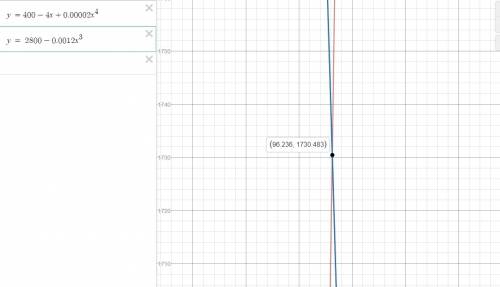
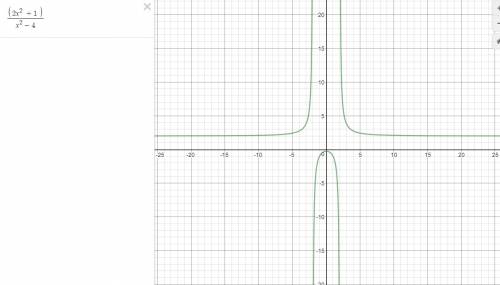
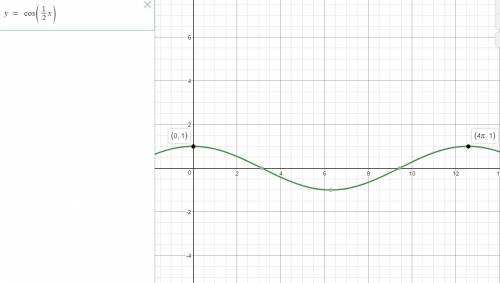
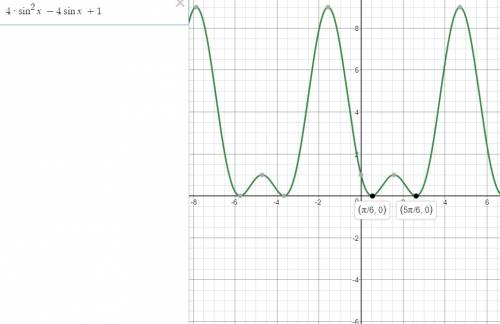
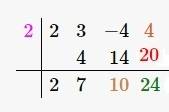
 80
80 
If the demand and supply are equal, then we equate the two functions in p and solve for p.
That is


We can rearrange to obtain,


The real roots of this polynomial equation are:

Since price can not be negative, we discard the negative value ,

The correct answer for question 16 is C.

We were given the solution to this polynomial as

We need to recognize the presence of the complex root and treat it nicely.
There is one property about complex roots of polynomial equations called the complex conjugate property. According to this property, if

is a solution to

then the complex conjugate

is also a root.
Since

is a solution then,

is also a solution.
Therefore we have


We expand to obtain,

Note that:


We now expand to obtain,

We simplify further to obtain,

The correct answer for question 17 is A.

If

is a zero of the polynomial,

then the complex conjugate

is also a zero,
This means that ,

are factors of the polynomial.
The product of these two factors,

is also a factor , so we use it to divide and get the remaining factors.
see diagram for long division.
The above polynomial can therefore factored completely as,

Applying our knowledge from difference of two squares, we obtain,

Hence all the zeroes of these polynomial can be found by setting

This implies,

The correct answer for question 18 is B

We were asked to find the horizontal and vertical asymptote of

To find the horizontal asymptote, divide the term with the highest degree in the numerator by the term with the highest degree in the denominators. That is the horizontal asymptote is given by,

For vertical asymptote, equate the denominator to zero and solve for x.


None of the options is correct, so the correct answer for question 19 is A.

We are converting,

to degrees .
To convert from radians to degrees, multiply by,

That is,

We simplify to obtain,

The correct answer is B.

Recall the mnemonics, SOH CAH TOA
The sine ratio is given by,

From the diagram,

The correct answer is C.

From the above diagram, We can determine the value of x using the sine or cosine ratio, depending on where the 17 is placed.
Using the cosine ratio, we obtain,

We can simply switch positions to make x the subject.



Hence the correct answer is A.

Coterminal angles have the same terminal sides.
To find coterminal angles, we keep adding or subtracting 360 degrees.
See diagram.

is coterminal with

or

The correct answer is D.
See the attached file for continuation.





1. The given triangle ABC, has a right angle at C, BC=11, and 



Ans: A
2. The reference angle is the angle the terminal side makes with x-axis.

This implies that,  has a reference angle of
has a reference angle of  .
.
Ans: C
3. Let x be the shortest distance the ramp can span.
From the diagram; 


Ans:B
4. Use the Pythagorean identity:  .
.
If  ,then
,then 


 , In QII, the secant ratio is negative.
, In QII, the secant ratio is negative.
Ans:C
5. We have 





Ans:A and D
6. The given function that is equivalent to  is
is  .
.
When we reflect the graph of  in the y-axis and shift it to the left by
in the y-axis and shift it to the left by  units, it coincides with graph of
units, it coincides with graph of  .
.
Ans:C
7. The function  is a one-to-one function on the interval
is a one-to-one function on the interval ![[-\frac{\pi}{2},\frac{\pi}{2}]](/tpl/images/0029/3850/8b799.png)
When we restrict the domain of  on
on ![[-\frac{\pi}{2},\frac{\pi}{2}]](/tpl/images/0029/3850/8b799.png) it becomes an invertible function.
it becomes an invertible function.
Ans: C
8. The given function is 
The horizontal shift is given by 
The direction of the shift is to the right.
Ans:D
9.  by the symmetric property of even functions.
by the symmetric property of even functions.




Ans: B
10. Recall the cosine rule: 
Let the angle measure opposite to the longest side be A, then a=19,b=17, and c=15.




Ans:B
11. We want to solve  on the interval;
on the interval;
![[-\frac{\pi}{2},\frac{\pi}{2}]](/tpl/images/0029/3850/8b799.png)
Factor: 
Either 
Or  This means that
This means that 
Therefore required solution is 
Ans:D
12. Use the relation: and
and 
The given rectangular coordinate is (1,-2)
This implies that:
 This means
This means  or
or 
The polar forms are:  and
and 
Ans: B and C
13. The polar equation that represents an ellipse is
 .
.
When written in standard form;  .
.
The eccentricity is  .
.
Therefore the  is an ellipse.
is an ellipse.
Ans: B
14. The DeMoivre’s Theorem states that;

This implies that:
![[2(\cos \frac{\pi}{9}+i\sin \frac{\pi}{9})]^3=2^3\cos 3\times \frac{\pi}{9}+i\sin 3\times \frac{\pi}{9})](/tpl/images/0029/3850/de0fb.png)
![[2(\cos \frac{\pi}{9}+i\sin \frac{\pi}{9})]^3=8(frac{2}{2})+i8(\frac{\sqrt{3}}{2})=4+4\sqrt{3}i](/tpl/images/0029/3850/dad44.png)
Ans: A
15. Let the initial point be (x,y), Then  .
.
If x=-8, and y=-4.
Then,  .
.
 .
.
Ans: B
16. We find the dot product to see if it is zero.

Since the dot product is not zero the vectors are not orthogonal


Ans:B
17. Given v=5i+4j, w=2i-3j.
u=v+w
Add corresponding components
This implies u=(5i+4j)+(2i-3j)
u=(5i+2i+4j-3j)
u=7i+j
Ans:B
See attachment.
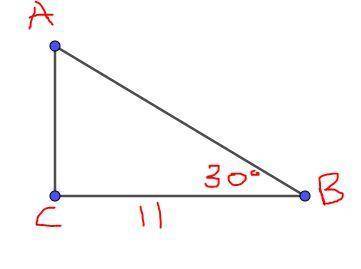
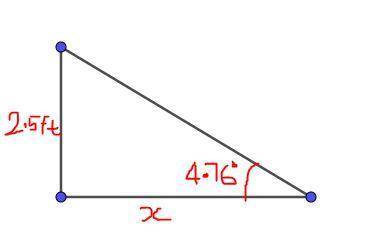

It will provide an instant answer!
